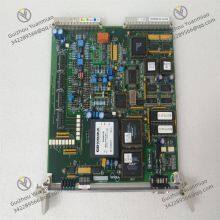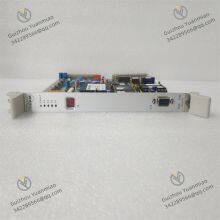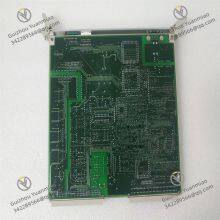Material
Other, Global universal model
Condition
Other, Global universal model
Task
Other, Global universal model
Mathematical Model
Other, Global universal model
Signal
Other, Global universal model
Customized
Non-Customized
Structure
Other, Global universal model
Supply voltage
24VDC
Operating temperature
-40°C to +85°C
I. Overview
TEAM BL0170 is a high-performance control module. With its excellent performance, reliable quality and outstanding compatibility, it has become a core component for achieving precise control and efficient operation in fields such as manufacturing, energy industry and chemical production, providing solid support for the stable operation and functional expansion of industrial automation systems.

II. Technical Parameters
Power Adaptation: The working voltage is adapted to the 220V standard industrial voltage, which can seamlessly connect with various industrial power supply systems, ensuring stable power supply in long-term and high-intensity working environments, meeting the strict requirements of the module for power stability and continuity, and effectively reducing the risk of operation failures caused by voltage fluctuations.
Communication Interfaces: Equipped with a variety of communication interfaces, among which the Modbus interface is particularly eye-catching. Through this interface, the module can perform efficient data interaction with devices supporting the Modbus protocol. Whether transmitting control commands or feeding back device status information, it can be done accurately and quickly, greatly enhancing the feasibility and convenience of building large-scale and complex industrial automation networks.
I/O Capability: It has multiple input and output channels and strong signal processing capability. These channels can accurately sense analog signals in the external environment, such as temperature, pressure, flow, etc., as well as digital signals, such as equipment switch status, pulse signals, etc. After efficient processing inside the module, the results will be accurately output to control various actuators, so as to realize the precise regulation of the industrial production process and ensure the accuracy and stability of the production links.

III. Functional Features
Wide Applicability: The multi-channel design and excellent processing capability for various signal types enable BL0170 to show high versatility in industrial automation and control system scenarios. Whether it is the precise control of robot movements in automobile manufacturing production lines or the real-time monitoring and precise regulation of reactor temperature and pressure in chemical production processes, it can handle them with ease, fully demonstrating its strong adaptability and wide application range.
Advantage of Real-time Response: In the field of industrial control, the speed of real-time response is directly related to production efficiency and product quality. The BL0170 controller card has strong real-time processing capability, which can conduct in-depth analysis and rapid processing of input signals in a very short time and make corresponding decisions in a timely manner. In high-speed production lines, once abnormal product quality or sudden equipment failure is detected, it can quickly issue an alarm and take effective control measures to ensure that the continuity of the production process is not affected, and strongly guarantee the stability and consistency of product quality.
Flexible Programming Characteristics: It supports multiple mainstream programming languages such as C, C++, Python, etc. Users can carry out customized programming for the module using these programming languages according to specific application requirements, making its functions and behaviors fully in line with specific industrial production processes. This high degree of programmability gives users great autonomy, enabling them to flexibly adjust module functions according to changing production needs, significantly improving the flexibility and adaptability of industrial production, and helping enterprises quickly respond to market changes.
Compact Design and Convenient Installation: Adopting a compact shape design, it is small in size but powerful in function. It can be easily installed in industrial control cabinets with limited space without occupying too much valuable space, and is also convenient to integrate into existing industrial control systems. During the integration process, there is no need to make large-scale changes to the original system architecture, which greatly shortens the system integration cycle, improves integration efficiency, and reduces the cost of system upgrading and transformation.

IV. Common Faults and Solutions
Communication Connection Failure
Possible Causes: Communication cables may have damaged outer skins or broken internal wires after long-term use or in complex industrial field environments; factors such as vibration in industrial sites may easily cause interface loosening, resulting in poor contact; if the communication protocol settings do not match the connected devices, communication problems will also occur.
Solutions: Carefully inspect the communication cables, and immediately replace them with new ones once damage is found; re-plug the interfaces to ensure a firm connection, and if necessary, use fixing devices to reinforce the interfaces; re-check the communication protocol settings to ensure they are consistent with those of the connected devices, especially key parameters such as baud rate, data bits, stop bits, and parity bits, which must be set correctly.
Abnormal Input and Output
Possible Causes: The hardware of input and output channels may be damaged due to long-term use or impact of overvoltage and overcurrent; there are a large number of electromagnetic interference sources in industrial sites, which will seriously affect the signal transmission quality; incorrect wiring during installation or maintenance may also lead to abnormal input and output.
Solutions: Use professional testing tools to conduct a comprehensive inspection of input and output channels, and if hardware damage is confirmed, replace the damaged channel modules in a timely manner; take effective anti-interference measures, such as adding shielding layers to cables and installing filters, to reduce external signal interference; carefully check the wiring against the wiring diagram to ensure that each connection is accurate and reliable.
Module Failure to Start Normally
Possible Causes: In terms of power supply, unstable voltage, loose power cords or faulty power modules may cause the module to fail to start normally; firmware may be damaged due to virus attacks, abnormal power outages, etc., affecting the module's startup process.
Solutions: Use a multimeter to measure the power supply voltage and check if it is within the normal range. If the voltage is unstable, a regulated power supply should be used for power supply; check if the power cord connections are firm, and re-connect if loose; if the power module is suspected to be faulty, replace it with a new one in time. For firmware damage, try to repair it with the official firmware repair tool. If it cannot be repaired, contact the manufacturer to obtain the latest firmware and upgrade it to ensure that the module can start normally and run stably.














































